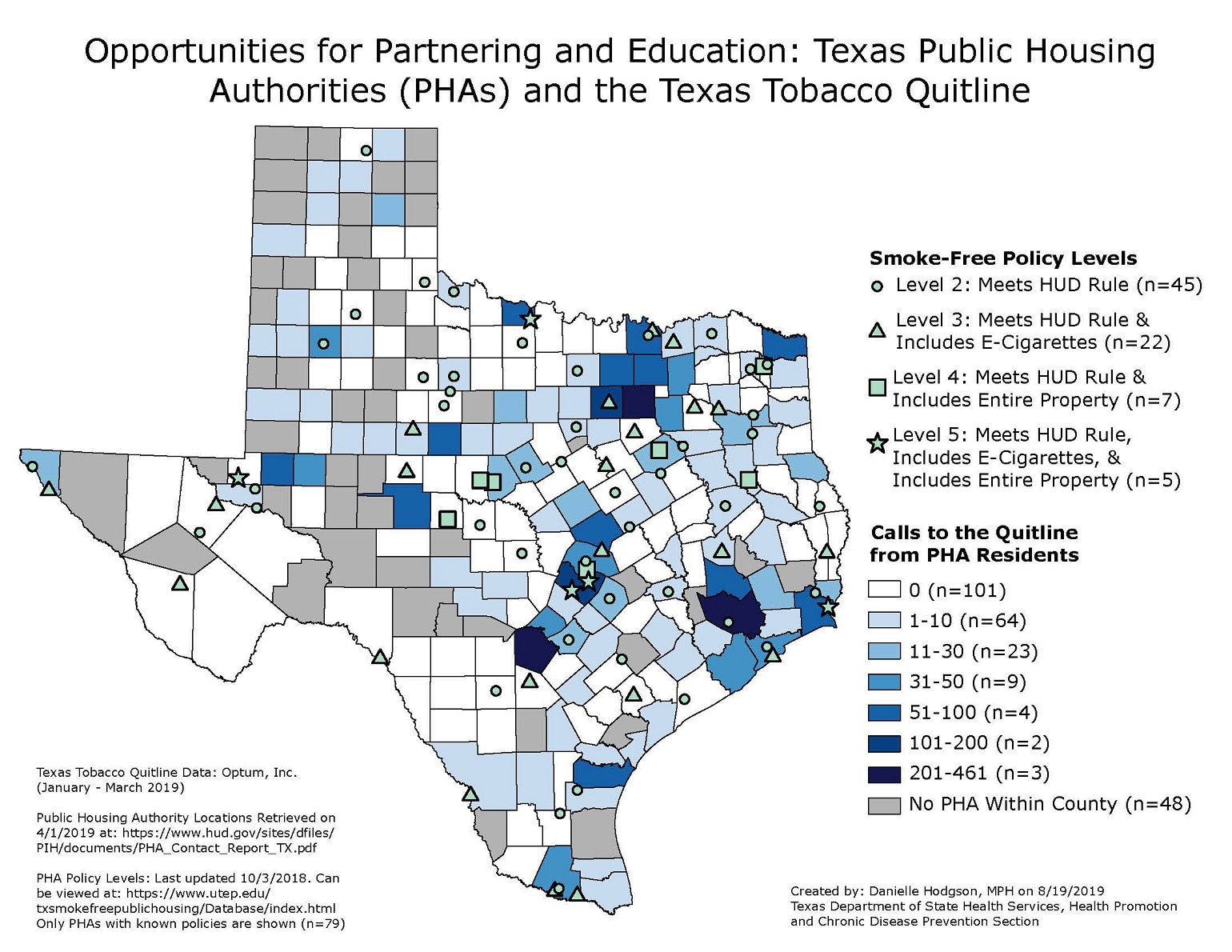Key points
Map

Data sources
The HUD smoke-free public housing rule went into effect in July 2018. In summer 2018, the University of Texas at El Paso (UTEP) conducted a project with PHAs to provide support and education about 'enhancing' their smoke-free policies to include more stringent provisions than were required by HUD. Additionally, UTEP provided the PHAs with information on various smoking cessation resources available to their residents. One resource provided was the Texas Tobacco Quitline, a state-funded, free service that provides cessation counseling and free nicotine replacement therapy to qualified callers.
The Texas Department of State Health Services (DSHS) assessed the relationship between PHA's smoke-free policies and the number of calls to the TTQL from PHA residents to determine if number of calls differed by level of smoke-free policy. Most Texas counties had no calls by PHA residents to the TTQL during this time. Of counties with PHA resident calls, most ranged between one to 50 calls. Three counties (Harris, Bexar, and Dallas) had more than two hundred calls from PHA residents. The lack of a clear association between number of calls to the TTQL and level of smoke-free policy may indicate a need to further educate PHA administrators and PHA residents about the free resources available through the TTQL.
ArcGIS
Texas Tobacco Quitline Data: Optum, Inc.
University of Texas at El Paso: https://www.utep.edu/txsmokefreepublichousing/Database/index.html; Public Housing Authority Smoke-Free Policy Levels, Updated 10/3/2018
Only Public Housing Authorities (PHAs) that submitted their smoke-free policies to UTEP are displayed on the map (79 out of 382 PHAs), with different symbols indicating the different policy levels. Smoke-free policies were classified into five levels by UTEP. Level one represents PHAs that did not meet the minimum HUD requirements at the time of the survey; these are not shown on the map. Level two represents PHAs that meet the minimum HUD requirements. Levels three to five represent PHAs with ‘enhanced’ policies that include more stringent provisions than HUD requires. Graduated colors show the number of calls per county by PHA residents to the TTQL.
Danielle Hodgson, MPH, Texas Department of State Health Services
Danielle Hodgson, MPH, Texas Department of State Health Services. Accessed from the Centers for Disease Control and Prevention's Chronic Disease Map Gallery.
